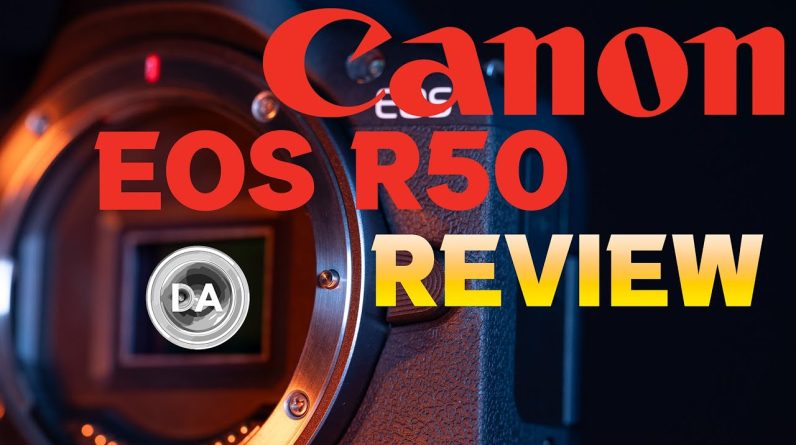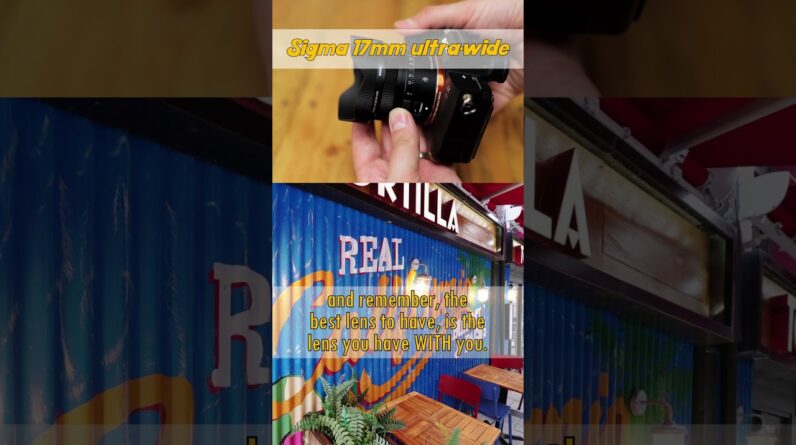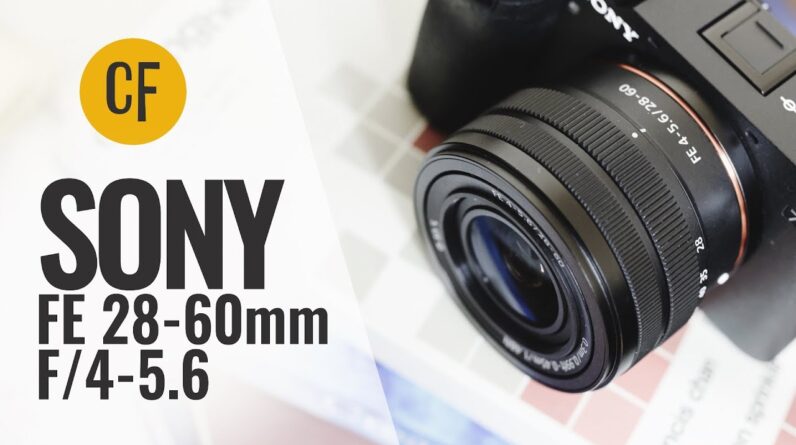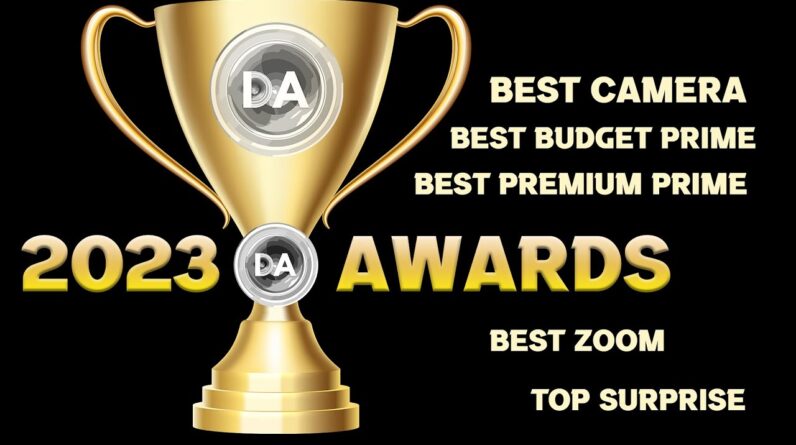[intro music] Viltrox has leveled up once again with their latest release That is the AF 16mm F1.8 FE. This is for Sony full-frame mirrorless cameras. This is a full-frame wide-angle,
wide-aperture prime lens that Happens to have the features and the performance
of a Sony G Master lens But at a fraction of the price. Find out why the Viltrox 16mm F1.8
should be at the top of your list If you're looking for a wide-angle prime lens,
right after a word from our sponsor. Today's episode is brought to you by Fantom Wallet, The minimalist modern wallet that is now
even better with the new Fantom X That is crafted from aluminum right here in Canada. It is 22% smaller and 35% lighter, While still making it easy to access your cards
and money when you need them, Thanks to their unique fanning mechanism. You could even customize your wallet
due to its modular design With accessories like a money clip,
cash holder, ID display, And even Chipolo and AirTag tracking integration. Visit store.fantomwallet.com to check out
their unique sizes, styles, and finishes That span from aluminum, to wood, to carbon fiber, And use code "DUSTIN15" for 15% off
when you're ready to check out. Viltrox has hit a whole new level for its features
in a lens like this. I noted that they had leveled up with their 75mm
F1.2 for Fuji X-Mount, that was an APS-C-specific lens, But this lens really surpasses what we saw
even on the 75mm F1.2 Pro lens. This doesn't carry a pro badge, but It really feels, if anything, even more professional
than what that lens did. We have seen a whole new level of features here, Well, for a while, Viltrox has had an aperture ring, And you continue to have that here with
1/3 stop detents, The ability to put it all the way over
into automatic mode. But now we have a de-click option
on the side of the barrel Which allows you to de-click that aperture
and to do smooth aperture racking, Which obviously, is going to be a key feature
if you're wanting to do some video work
With a lens like this. And by the way, It works really well for video purposes
as we'll see a little bit later on. They have added for the first time
one of their full-frame lenses, We have an AF/MF switch here. Also, below that, we have dual function buttons on here. So the top function button works something like The focus hold button on a Sony lens. The bottom lens, however, is a preset button, And that gives you the ability to preset a couple of
an AB focus position, And so you can click and you can go right in between
those two preset focus positions. That's obviously gonna be really useful
if you're doing video work And you're wanting to pull between
two preset subjects, Or even if you're doing stills work
and you want just to have a certain Focus distance program in a click of a button
after you have set that, and away you go. But the headline feature here, of course, is the addition
of the top-mounted LCD screen. This is a feature that I've only seen really
on Zeiss Batis lenses On the mirrorless space here on Sony. But I would say that they have actually one-upped
what Zeiss did with theirs, And that there's a whole lot more functionality
built into this LCD screen. So you have a couple of things that are
taking place. Primary things, you have, Obviously, the ability to see your focus distance Both in a large scale in terms of just
a digital readout, But then also an electronic distance scale along
the top that helps you to let you know there. Along the bottom, it gives you kind of a redundant Showing of what your aperture setting is. Now, I say "redundant". If you're using the aperture ring,
which is right there. However, if you are using your aperture control
from within the camera, What that allows you to do is to see right
from a top-mounted, What your actual aperture position is. And so if you happen to have a camera like,
which– I don't think any Sony cameras do
have a top-mounted LCD screen, It allows you to see right there
what your aperture value is. The other thing that's there is that it will light up,
showing you the function button When you're using that, but then it
Also allows you to use this screen to preset
your focus distances. And so, You can see an actual marking of where
your focus distance is If our two AB focus points are on that, and it
gives you more information on that. By the way, you can set or reset those focus positions
by long holding The second function button there on the bottom.
That allows you to preset that position. Now, I have only one complaint about
this operation here, And that is that the buttons could be a
little bit better executed. They seem to require a little bit more force than
what I like, they're a little bit spongy-feeling. And so as a byproduct, I find that it is
a little bit difficult If you're doing a video focus pull back and forth.
As you can see here, You can probably see a little bit of vibration
introduced when I actually click That function button to change that,
because you have to push it a little bit harder Than what you might otherwise like. Also included now, for the first time, on one of their
full-frame lenses, is weather-sealing. It starts with a uniquely colored gasket
at the lens mount, And there are internal seals as well. Now, I haven't seen a cutout for this yet
because it's not been released. I'm reviewing a pre-released copy, but What I saw, if it's comparable to what
I saw in the 75mm F1.2, There are pretty typical amount of weather seals, Gaskets at the key positions throughout. And I suspect that this is probably sealed
in the same fashion. There is a metal focus ring that has a nice damping. It has about 210 degrees of rotation. And obviously, the addition of having
a distance scale on here, Which is something you typically don't see
on a mirrorless lens, Allows you to have a little bit more repeatable results
if you're doing manual focus pulls. So there definitely are some really useful videocentric Features on this particular lens. Now, a Viltrox standard that they've had
pretty much from the beginning Is the inclusion of a USB port.
In this case it's a USB-C That is located on the lens mount itself. And so, that allows you to do firmware updates
right to the lens Without any kind of docking station
or anything like that.
The lens itself is what I would call a medium-sized lens. It is 85.2mm in diameter. That's 3/4 inches, And it is 101mm or a little 4 inches in length. And it weighs in at 550 grams or about 19.4 ounces. So it is very slightly larger and heavier than the
Sony 14mm F1.8 G Master. Though, I did point out that lens as being
incredibly, unusually small for its size. This is still a moderately-sized lens
and it certainly is not at all heavy. In fact, I was able to use it no problem
on a smaller gimbal Like the DJI RS 3 mini gimbal. And so, it balanced on there just fine
and I was able to use that, And you'll see some footage from that
in just a moment. Now, one thing that I'm really impressed that
they were able to pull off with a, You know, wide angle, wide aperture prime like this, Is that we do still have a flat front element. We can use traditional 77mm
filter thread filters on here, And so that's very, very useful. I did some
of these long-exposure shots By putting on a long or an ND1000 filter on there. It allowed me to get long exposures
even in the middle of the day. So I really appreciate that as a part of the design. We don't have a bulbous front element, and it's
much simpler to actually filter this lens. There are 9 aperture blades inside,
and Viltrox has gotten much better At retaining a circular shape on their aperture
when it's stopped down, And it does have a pretty nice
sunburst effect as well As we'll see during our image quality
breakdown section. Now, unfortunately, the one kind of lingering
Viltrox negative That I'll highlight here once again, is the fact that The minimum focus distance is not
particularly close. It's 27 centimeters, And the maximum magnification seems to be kind
of the standard that all Viltrox lenses have. It's just 0.10x, which is definitely on the low side, And so it makes it a little bit less useful
for those close-up shots. The overall build here is very nice. Its mostly
metals in the construction, So it feels really good-quality. The only thing that kind of stands out as being
the exception is the lens hood itself, Which is plastic, and also,
it just feels a little bit cheap.
And also, I find that it's not all that difficult for me to Push past what should be the locking point here
and to go a little bit beyond there. And so it's just not as engineered to the tolerances
that I would prefer to see. Frankly, I'd prefer to see one of their metal lens
hoods here, but Even if it's gonna be plastic, if it was just
a little bit more robust, That certainly would be appreciated. Overall, however, it's hard to complain
about all of this. For 549 US bucks, that is a huge, huge bargain. Now, autofocus comes via Viltrox's
LED screw-type STM or Stepping Focus Motor. This is a really
well-executed one here. Focus changes are nice and snappy
as you can see here, Even going from very close to infinity. It's not GM-level fast. We know with their
multiple linear motors, But this is nice and snappy. I had zero issues
in focusing out in the field. I found that eye AF worked well,
even working off of a gimbal. As we can see here, I had no problem moving around, And you can see that everything stayed nice and sticky
on Nala's eye during that shot. Then when I did the focus pulls, you can see that
focus pulls are nice and smooth here, No kind of pulsing or settling. Also, you'll note that there is next to no
focus breathing there. Everything is really well executed on that front. I also found that focus pulls in video
were typically very smooth. Not quite, as you know, beautifully damped as like
the new Samyang V-AF lenses. They're kind of, you know, purposely designed
for use for cine, And so their damping is a little bit smoother. But even in those focus changes,
as I move around on the gimbal, Overall, I think the focus changes are nice
and smooth; nothing abrupt or disjointed. Also, when I did my hand test,
autofocus worked just fine there. Moving from the hand to the eye, and again,
because it's so smooth, Basically, all you just see is that focus changes
with nothing abrupt Or kind of jaggy-feeling as it goes back and forth. I also did use it in a portrait setting,
and with a wide angle like this, The eye occupies too small a portion of the frame
for a box to be on it. At the end of the day, the autofocus results
were all just fine.
And so that's what matters most. And I was able to get good, precise results,
even when I was shooting at A shallow depth the field as possible. So again, autofocus performance is
actually really, really good here. So all of this is stacking up pretty well,
and if we look at the MTF for the lens, We see that it suggests a lens that is very sharp
wide-open, and deadly sharp when stopped down, With a very consistent performance
all across the frame. We're gonna dive in and take a look and
break down that optical performance, But I suspect you're going to be pleased
with what you see as we do. So let's start by taking a look at vignette and distortion. So as you can see here, there is not a lot of
distortion for a wide-angle lens, However, as we're going to see, the distortion
in this area is just very slightly complex. There is a fair amount of vignette
as we're going to see. And at this stage, I don't yet have a profile to correct, So all I have to go on is manual corrections. So as you can see, kind of correcting for the
distortion is a little bit complicated, Because there is a very, very tiny
amount of barrel distortion, But if you try to correct the barrel distortion,
it creates some pincushion distortion, And if you go the other direction, it just creates Some barrel distortion curving out on these edges. It's a non-linear type of distortion. Fortunately,
there's very small amount, But this is going to be a lens that, If you're gonna correct it, it's gonna be
better to do it With a profile rather than trying to do it manually. A fair amount of vignette here,
a +80, so well over three stops, Certainly far from the worst that I've seen,
but also not the best either. I will note, however, that they've managed
to get this wide aperture of F1.8 And retained a flat front element. Sometimes, vignette can be reduced by doing
a curved front element, And of course, that eliminates
using traditional filters. So I'm going to accept this compromise because it's
not all that hard to correct this vignette. Now, in real-world applications, The distortion is low enough that it's
really not gonna be a factor. So here's a real-world image here.
You can see straight lines here,
and along the edges of the frame, Really no issue to see there.
Likewise, taking a look at a room, Lots of straight lines here, and you can see that
there's no real bulging That's taking place in these lines. And so, Most of the time, you're gonna be able to get away
with just not correcting the distortion at all. Now, in terms of chromatic aberrations,
they are pretty mild here. You can see just the tiniest amount of fringing
after the plane of focus there; Nothing significant at all. We can take a look at lateral chromatic aberration
near the edge of the frame, And we can see if we punch into the sides here, that There's really just not much of anything to see.
Not really a factor here. So overall, chromatic aberration is not an issue. So we'll take a look here now at our resolution. This is a 50-megapixel Sony Alpha 1 sensor, And I'm showing you these results at
200% magnification. You can see, even at that very high magnification,
in the center of the frame, This lens is extremely sharp with very high contrast.
Everything looks really fantastic. If we move towards the mid-frame,
mid-frame is not quite as sharp, But it's still at a very high level Even wide-open. And popping down here
into the corner, We can see that sharpness and contrast
is good even right into the corner. Now, to put this into perspective, I've got
for comparison purposes, The much more expensive Sony FE
14mm F1.8 G Master. And so, we can see here that looking here
at the mid-frame, that the Viltrox is the sharper of the two lenses. That's true also here. If we look down
towards the corner, The corners are a little bit closer,
but the Viltrox still looks, I would say, just a little bit better,
even into the corners. Over here on this side, we can see it
looks better there. And looking over here towards the queen,
we can see that, again, It's the Viltrox that stands out as being
the stronger lens. Up into this other corner as well, and we can just see
that Viltrox is just holding up A little bit more consistently.
And we can also see, Obviously not quite the same comparison points here,
But we can see also at the same time that the Viltrox is showing good centering
and a good strong performance. So, for some perspective in real-world shooting, Here, we have, basically, the same shot at
F1.8 and then at F5.6. And we can see here that if we go in towards
the center of the frame, That in the center of the frame, there's really
not much difference between the two lenses At F1.8 or at a landscape aperture of F5.6. If we pan over towards the side of the frame,
we can see that here, that Contrast is holding off better towards the edge
of the frame at F5.6. But we can see, overall, that performance
is really quite good even at F1.8. Perfectly usable image you can get wide open at F1.8. So, of course, that does give you some flexibility
in playing with depth the field here. So, For example, in this shot, the first shot,
I put the lighthouse here in focus, And you can see here that in the second shot,
it is completely out of focus. And then in the second shot, I put the
foreground branches in focus. And so it just allows me to really kind of
change up the result That I'm going for in that by playing
with the depth of field. Now, if we stop the lens on down,
we can see that F2 Is looking just a little bit sharper,
a little bit better contrast. F2.8 is more contrasty still, And that becomes more obvious as you go
towards the edge of the frame. You can see here that, you know, F2 looks good,
but F2.8 looks better. And down into the edge of the frame,
we can just see that At F2.8, we've made a real strong leap forward
in terms of edge performance, And that's going to be true, you know, regardless
of what edge we look at, essentially. And that over here, also looking sharper as well, Getting very crisp even on a 50-megapixel sensor
right off into the corner of the frame. Now, if we check back in with the
Sony G Master at F2.8, We can see here, looking at the mid-frame, that, You know, again, they're closer,
but I would say that The Viltrox still looks a little bit better
down into the corner of the frame. Again, it's close, but I would still lean
Viltrox looking in this area. Again, it's very close, but Viltrox is Probably just a little bit more consistent there
in terms of the performance delivery.
And definitely, over on this side, I would favor Viltrox.
And up into this corner, Both of them look good, but again, I think
the Viltrox, as you can see here, Is just delivering a little bit stronger performance. Now, throw up just one more point of comparison. The Sony 12-24mm F2.8 G Master zoom lens, Obviously, a very expensive lens by comparison, However, we can see that the zoom
is just really incredible Here at 16mm at F2.8, and it's definitely
the sharper of the two There in that mid-frame. As we look here,
very clearly sharper, And down into the corner, it is not as strong there. The Viltrox has the edge
in the corner of the frame, But in other spots, I definitely would say
the G Master zoom is sharper, but To put it in comparison there, we definitely can see
that the Viltrox is really holding its own For being at such a low price point by comparison. Now, if we look at F4 and then F5.6, we can see
that in the center of the frame, We pretty much maxed out what we're going to see. Not a big improvement there,
even for what we've seen before. In the middle of the frame, however, we can see
ongoing improvement at F4, And then even more so at F5.6. And down into the edge of the frame, those corners
are looking just really fantastic, Very crisp, very sharp, by this point.
And so, That's really obviously very encouraging to see;
a really strong performance. That makes this lens a really great one
for high-resolution bodies, Because it means you can be out, and you can
shoot a wide, you know, scene like this. You can zoom into a 100% level here, and
you've got great detail on your subject, And you could deeply crop an image like this. And because the lens is resolving so well,
we still have a lot of detail for, You know, other type uses that would
hold up fine for printing Or sharing on social media, et cetera, et cetera. Now, our minimum aperture here is F22 as per usual, However, diffraction is robbing a lot of your
sharpness and contrast away. And so I would avoid shooting at that smaller aperture. Usually, about F11 is about the limit of what
I'd recommend going on a high-resolution body. Now, to take a look at a few other things.
We've already noted that the maximum magnification
is not super high here. On the positive note, you can see that
contrast and detail Are really, really sharp up-close. And so, and the plane of focus is not too bad
for a wide-angle lens. You can see we don't drop off
to like completes softness. And over here, up in the corner, we can see that
it still looks quite good. And so, it is fairly useful even though the
magnification level is not high. And so as a byproduct, you are able to get some
blurred out backgrounds Between getting close to the subject and then
using that F1.8 aperture. And so, in this case, we've got, you know,
really nice detail on the subject. And then we have a fairly decent
defocused background, Maybe a little bit more outlining in some of the
bokeh circles than what I would like, But really not a bad performance. Here, the outlining is a little less obvious, and, You know, as we can see, detail is good
on our subject here. And then we have a fairly blurred out background. And then, you know, again, having that high resolution,
here, you can see, again, The bokeh is a little bit busy there;
just too much outlining. But the ability to deeply crop as I can do here
and still hold up with a lot of detail, You know, makes for a little bit more
compressed-looking background. A few more looks here. I thought this image
actually looked pretty good For a wide-angle, and up-close, and another
from this kind of sequence. And again, more outlining than what I would like, But bokeh quality, not bad for a wide-angle lens. You know, often, that's not a strength
for wide-angle lenses. And so, all things considered, I think this is
fairly decent in its performance. So also interesting is in times past,
I felt like Viltrox's color was not really All that fantastic, but their optical glass
has very clearly improved. And so, what we can see here is that I've shot
this in this, you know, sequence Side by side with the new Sony 50mm
F1.4 G Master lens. And you can see that, obviously,
there's a tremendous difference In the framing between these two extremes. But in terms of the overall color, the color is
actually quite consistent between the two. And so we can see that, obviously, it's a whole lot
creamier on the G Master.
This is a little bit jittery. The way that it falls
in that mid-frame. But as far as the actual colors here, the colors
look quite similar between the two lenses, Which, just, again, is something that I felt in general, That colors just looked pretty good out of the lens,
which is progress. Here's another example here where Just the overall colors and obviously, the Lens has beautiful contrast and beautiful resolution. So a lot of, you know, great things happening there, But I also felt like the overall colors here
look quite nice. Another aspect of wide-angle lens design
that's important is flare resistance. Now, we can see here that the flare, At wide apertures, is pretty well contained. There's a little bit more to be seen. You can see just down here in this effect
when you're shooting at A closed down ature. This is F11 here. Although I will say that the sunburst
looks quite nice. Again, here, with it at a wide angle with this
close-up to the leaf, Bright sun coming through here, and yet,
you can see just a little bit of a Kind of a prismatic effect there that is fairly artistic, And overall, flare resistance is quite good. One other shot to show you here, and that is that The sun, right in the frame in this shot,
and you can see there's this, You know, little bit of a kind of artistic effect here. Not bad at all and certainly not destructive. No, you know, ugly blobs that are ruining the image. Now, if we pan back and forth, you can see that,
as always, there are Points that are better than others. But In general, I would say that flare resistance is not bad
here for a wide-angle lens. One final thing that's interesting to look at
is the coma performance. A wide-angle lens like this with a wide maximum
aperture Immediately becomes, you know, an option
for shooting the night sky Or cityscapes at night. As you can see in the center of the frame,
the lens is very sharp, And so even at F1.8, it has really crisp
Star points that aren't ruined by chromatic aberrations. And as I pan off towards the side, you can see
a little bit of some coma deformation, But it is really minimized. And so,
there is nothing severe here. Nothing that I think is going to be
destructive for this. This is actually quite a good option
for shooting the night sky For the reasons mentioned, and the fact that
coma is quite low. So at a price point of 550 US dollars, This lens is, in my opinion, a home run
for Viltrox. It's hard to imagine getting more bang
for your buck in a wide-angle, Wide-aperture prime like this. It's delivering high optical performance, has very
good autofocus performance. It's feature-rich. It has a beautiful build. It's pretty much checking all the boxes at this point, And the fact that they retained a reasonable size
and the ability to use traditional filters, As I said, that's another few boxes
that are checked for me. I'm actually looking forward to using this
as my primary wide-angle prime lens. I just think that they have done a great job with it. I'm happy now with Viltrox colors
in a way that I used to not be. I think that they have really upped their game
on basically every level, And if this is what we can expect from
Viltrox moving ahead, I am very excited to have them as a player
in the lens maker market. Here's hoping that this lens also comes to other mounts
in the future – Nikon Z, and, Hopefully, hopefully, Canon RF in the future. It really is a beautifully executed lens, and I can understand that a company like Canon
wanting to keep a lens like this way. It's gonna be tough to compete with
at that price point. I'm Dustin Abbott, and if you look in the
description down below, You can find linkage to my full text review,
also to an image gallery. Obviously, this lens is just coming to market If you're watching on the day of release of this review. And so, if you'll just stay tuned, it should be
available before too long Through the buying links below, and I appreciate it
as always if you use those. You can also find linkage there to follow myself
or Craig on social media, To become a patron, to sign up for my newsletter,
to get channel merchandise.
And if you haven't already, please like and subscribe. Thanks for watching. Have a great day,
and let the light in. [outro music]






